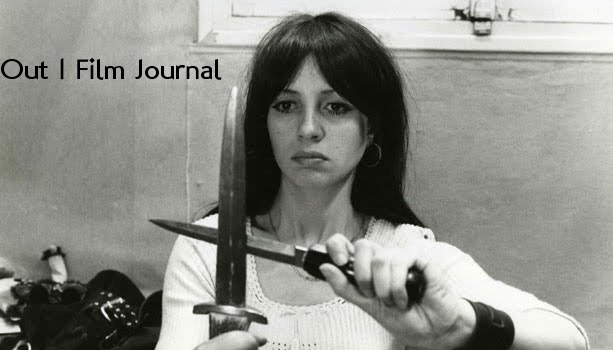
“Cinema...appeases a certain sense of nostalgia that lies dormant in our hearts, nostalgia for countries never seen that will perhaps never be seen, but where it seems that we have already lived in a preceding life.” Fausto Martini, 1912
by James Hansen
In his book Eye of the Century, Francesco Casetti quotes Italian journalist Fausto Martini, who wrote the following in 1912: “Cinema...appeases a certain sense of nostalgia that lies dormant in our hearts, nostalgia for countries never seen that will perhaps never be seen, but where it seems that we have already lived in a preceding life.” Now, one hundred years later, cinema still presents us with this same does of nostalgia. From this, it could be argued that nostalgia itself is the cinematic (rather than merely photographic) condition. Without going too far into these issues – not to mention the significant changes brought on by a perhaps more contemporary condition in which irony and sincerity are a double-sided coin – it can be noted that many popular movies of 2011 provided heavy doses of nostalgia: The Help presented a dangerous nostalgia by overlooking its own preconditions; Hugo, the best and worst children’s movie about film preservation ever made, made a case for remembering histories and the enchantment of living within them; similarly, Midnight in Paris stumbled through its own enchantment with various time periods, ostensibly making a case for “the present,” as long as it involves a foreign country and beautiful companionship. The latter two films reflect Martini’s quotation – both Scorsese and Allen showcase the wonders of the past and suggest different alternatives for how those pasts cast be incorporated into the present. Michel Hazanavicius’s The Artist further illustrates this nostalgiac tendency. However, unlike Scorsese or Allen, Hazanavicius offers little in the way of contemporary relevance. Rarely has a film ever been so autonomously nostalgiac; if ever there were a definition of nostalgia-for-nostalgia’s sake, The Artist is it. 
Of course, this isn’t to say The Artist is without its pleasures. (And I imagine that some have no problem with the appeasing pleasantries of the nostalgia-for-nostalgia condition.) Starting in 1927, The Artist tells the story of George Valentin (Jean Dujardin), a silent film star at the peak of his powers. With a trusty canine sidekick by his side, George is, at all moments, a performer, sometimes to the ire of his castmates and producers. Soon, he runs into Peppy Miller (Berenice Bejo), a cute, young girl with a sly smile. Before long, George’s producers are telling him about talkie pictures – the wave of the future! – to which George firmly resists. Almost overnight, old-timey George is released and the up-and-coming Peppy takes his place. (Have no fear: George has invested well enough to make a major motion picture completely independently and release it to theaters.)
Historical problems aside for the moment, Dujardin and Bejo are both very charming. Though several of the best scenes are drawn from other silents, they provides the scenes with a certain energy that isn’t built into the insipid screenplay. Dujardin won the award for Best Actor at the Cannes Film Festival. He is in control of the film at every moment – and his period-based pantomime creates some genuinely smart and touching moments. Valentin’s nightmare sequence – in which interrupts his quietly controlled world – creates a visceral affect, signaling the true shock and radical change that sound brought to the center of movies.
At the same time, there is something missing at the heart of The Artist. Its final moments come off as cheap and easy. The much-discussed inclusion of Bernard Herrmann’s Vertigo score indicates not only a complete disregard for the period detail which supposedly define the film, but also an amateur, lack of control by the director and editor refusing fairly simple, logical parameters in order to flash their cinematic playfulness. Why make this a silent film at all? Similarly, the cheap thrills and laughs of the Oscar-hopeful dog ultimately ring false and completely vapid – both in a literal Lassie rescue and in a dumbfounding use of intertitles toward the end of the film. Ultimately, a place is found for our hero (thanks to the beautiful woman who he brought into the biz): The Artist pivots on simple-minded history – if only silent stars weren’t so stubborn and put on dancing shoes! – that ignores its own subject matter. 
Unquestionably, there is something in The Artist’s (or any) transitional focus which could echo the current state of filmgoing, even if it’s merely in striving to replicate a similar experience which is being lost. Perhaps people will see The Artist who have never seen a silent film before and it will draw them into the silent film world (although, given its slow, rollout, limited release strategy, one has to wonder about its effectiveness.) But, in the end, The Artist reads silent films as pleasant, but cheap – simple-minded sight gags for the world filled with sound. The tide has turned. Put on your dancing shoes, get a dog, and a beautiful girl, or be left behind. Its seeming cheerfulness ends with a menacing grin. In looking back in the manner of nostalgia-for-nostalgia’s sake, The Artist unwittingly sees itself as an outmoded commodity – one with a history, and one without a future.
Continue reading...
Friday, January 13, 2012
Fight The Future: "The Artist" (Michel Hazanavicius, 2011)
Subscribe to:
Posts (Atom)
